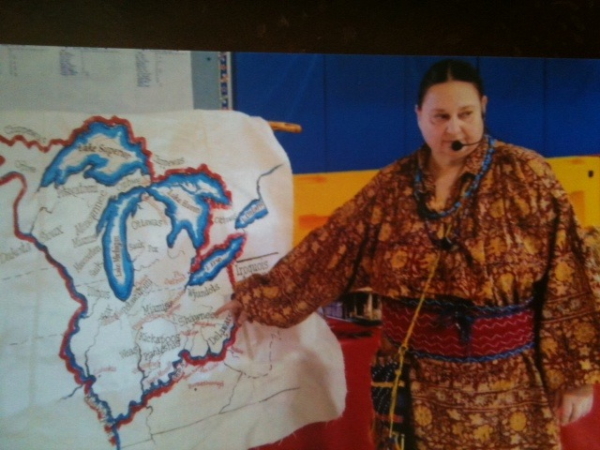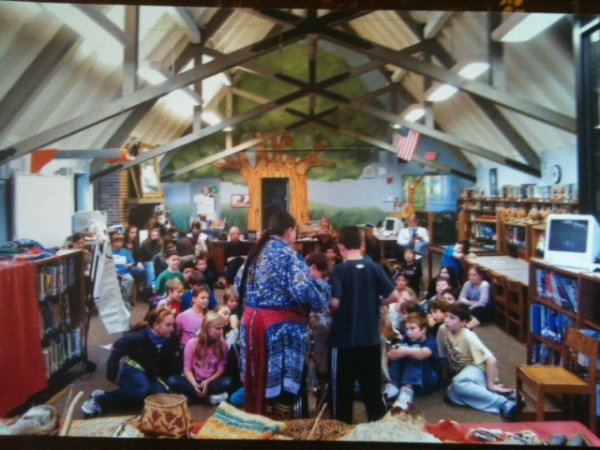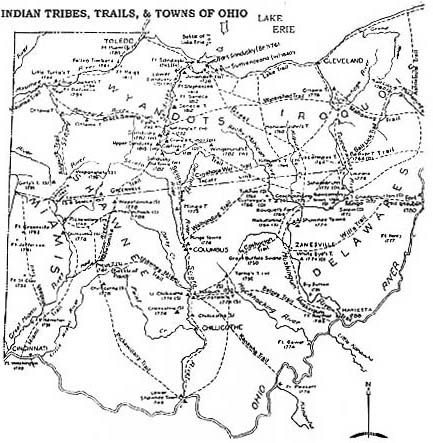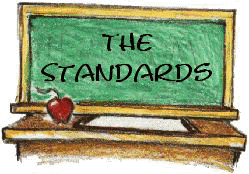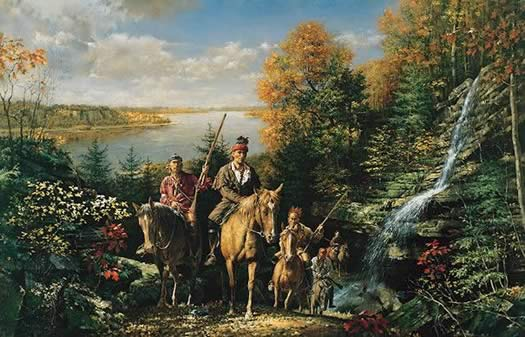I posted some photos recently from a performance by our Piankeshaw Trails Native American school assembly in the Chicago area, and I wanted to share another one. But this morning we also received a lovely piece of video put together by a good friend of ours following a performance at his school, so that is included here, too!
Education Through Entertainment
January is a full month when it comes to the history of Native Americans. A lot of things happened in past Januarys. Going all the way back to 1689 when the Abenaki Indians attacked a settlement in Saco, Maine and killed nine settlers. In 1706, Spanish leaders, trying to improve relations, met with leaders from the nearby Pirtle Indian tribes. In 1830, Red Jacket (Sagoyewatha), the great Seneca leader dies. Born around 1779 he was known as a great speaker and for his refusal to adopt “white ways”. And in 1863, the Bear River massacre takes place in which hundreds of California volunteers attacked Northern Shoshone Indians and killed several hundred, possibly including women and children.
One of our new programs this year is a real stunner! Piankeshaw Trails, performed magnificently by Sheryl Hartman, is an awesome school assembly program that introduces kids to the culture and history of the Woodland Tribes of the Ohio Valley. It is a great show in it’s own right. But it is also perfect for schools in Ohio, Indiana, Michigan, Illinois and Kentucky who are looking for ideas and means to increase kids interest in this field which is so heavily featured in state standards all across the Midwest.
I have been reading a fascinating book lately, made even more pertinent by the passing this week of Columbus Day (did you notice? It was last Monday). 1492 - The Year The World Began - by Felipe Fernandez Armesto details the myriad ways in which the world was changed by the voyage of Columbus and the European discovery of “the New World” It is a great book and one I highly recommend. Great stuff about all the changes the world experienced because of that voyage, many of which you might never have imagined. However, there is one area of change we all know a little about and that is the change wrought on the native population of North America by the arrival of Europeans.
Continuing today in the theme of exploring how school assembly programs augment the learning process in terms of state academic standards, we turn to Indiana.
In Social Studies, along with many other states, Indiana fourth graders are required to learn about Indiana state history. In particular , the very first section, Standard 1, and the very first two bullet points read as follows:
- Identify and compare the major early cultures that existed in the region that became Indiana prior to contact with Europeans
Example - Paleo-Indians such as Hopewell, Adena, and the Mississippian cultures
- Identify and describe historic Native American Indian groups that lived in Indiana at the time of the European exploration, including ways these groups adapted to and interacted with the physical environment. (Individuals,Society and Culture)
Example: Miami,Shawnee, Potawatomi and Lenape (Delaware)
There is more,but you get the point. Grade 4 is expected to learn about the native tribes indigenous to Indiana. Further exploration of the standards shows that grades 3 and 5 also cover this same material, as does Piankeshaw Trails, Mobile Ed’s new program specifically designed to teach kids about the native tribes of the Ohio valley including Indiana. All the points above are covered in this awesome and exciting program and a lot more. And the presentation is so much fun the kids don’t realize they are learning!
Now lets look at Science.
For most kids history is an ugly thought. Learning about history has about as much appeal as eating broccoli. Mention history to a lot of kids and their eyes glaze over with a look that says:
All over the midwest, in states such as Indiana, Ohio, Michigan and Illinois, part of the curriculum for intermediate grades involves teaching 3rd, 4th and 5th graders about the Native American tribes that lived in this part of the country before the Europeans arrived. There is nothing strange about this. All over the country it is standard for states to require children in this age range to learn the history of their own state. In the midwest states that is all wrapped up in the history and culture of the tribes that inhabited this area in the centuries before settlers began arriving from the eastern colonies of the early United States.
Last week we announced our three new school assemblies for 2011-2012 and bookings are coming in very quickly.
Hot on the heels of our announcements of two brand new school assemblies for 2011 (Stronger Than a Bully and The Invisible Wonder- Air!), Mobile Ed is pleased to announce our third new school assembly offering for the new school year!

